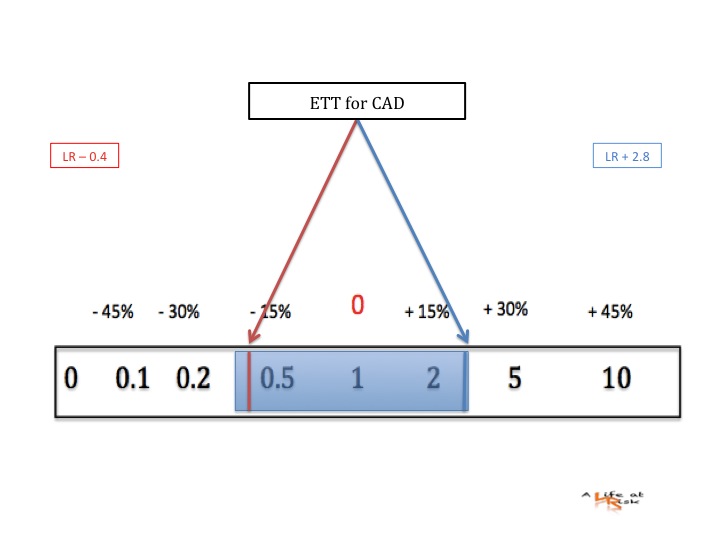A 40 yo truck driver, presented in ED with substernal chest pain. He is healthy, no family history of CAD. Held for observation, serial ECG have not modified, not elevated troponin.
Is an Exercise Treadmill Testing useful (ETT)? Or a Myocardial Perfusion Imaging (MPI) is better?


The pretest probability of CAD in this setting is less than 2%.


Conclusion
This is a classic example of how LR works. A very low pretest makes unnecessary further testing to confirm that. If negative or positive the post test probability changes a low. A positive test may lead the patient to undergo an invasive, dangerous and unnecessary test like coronary angiography. Patients with a very low pretest probability of CAD do not require further testing.
It is very surprising how low is LR of ETT ….this should be a material for next discussion.
Bibliography
EA Amsterdam et al
Testing of Low-Risk Patients Presenting to the Emergency Department With Chest Pain.
Circulation 2010, 122:1756-1776
LK Hermann et al
The limited utility of routine cardiac stress testing in Emergency Department chest pain patients younger than 40 years.
Ann Emerg Med vol 54 n1 2009
JM Kosowsky
Approach to the ED patient with low risk chest pain.
Emerg Med Clin N Am 29 2011 721-727


